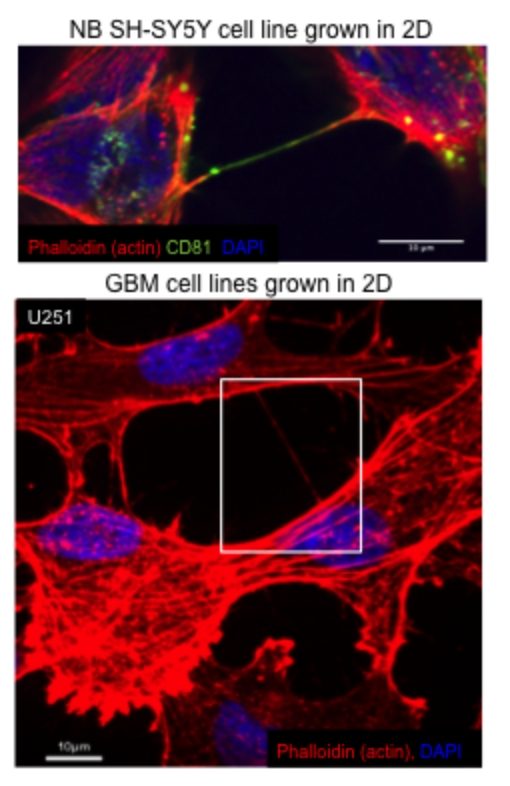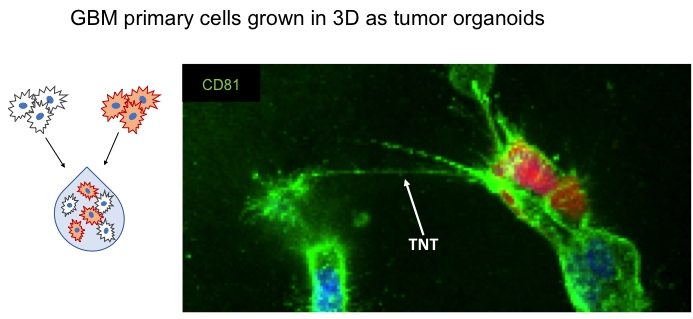Présentation
Role of TNTs in tumor networking, heterogeneity, and resistance to therapy.
In cancers such as glioblastoma (GMB) and neuroblastoma (NB), intra-tumoral heterogeneity plays a major role in tumor proliferation, trans-differentiation and invasion, as well as tumor evasion and therapy resistance. Recently, cellular protrusions (e.g., TNTs or tumor microtubes) connecting cancer cells and/or cancer and stromal cells were identified in several types of cancer forming a tumor network for the exchange of materials. This novel mechanism for tumor molecular networking correlated with more aggressive and therapy-resistant phenotypes.

We hypothesize that TNT-like structures play a major role in the establishment of GMB and NB heterogeneity and progression, and might be instrumental for the treatment of these cancers. Thus, our major aim is to evaluate the participation and consequences of TNT-based communication in cancer networking and in the development of radio/chemo-therapy resistance. Specifically, we are using different patient-derived GBM and NB cells to: 1) correlate the number and functionality of TNTs with cell identity and response to radio- and chemo-therapy treatments, 2) perform transcriptomic analysis to define targets involved in TNT networking constitution and 3) demonstrate the presence and functionality of TNTs in tumor-derived organoids.

This project will uncover the role and effects of TNT-mediated intercellular communication in therapy-resistant cancers, and may provide specific factors targeting TNT formation in fighting cancer


